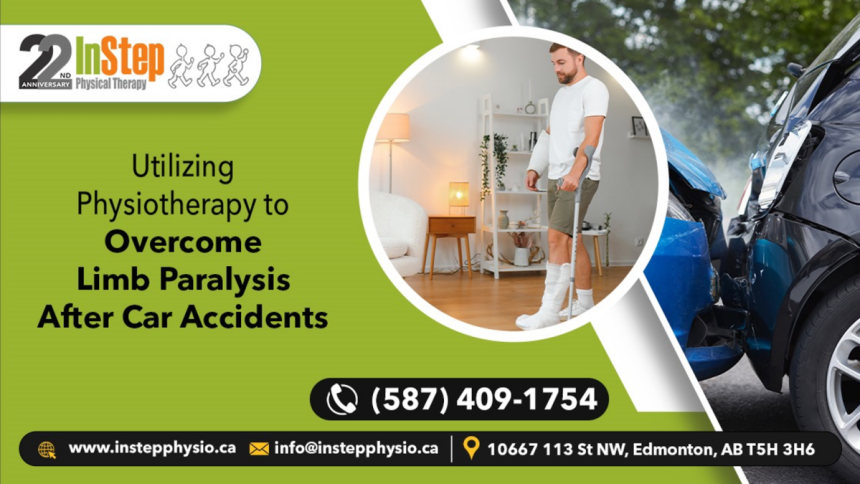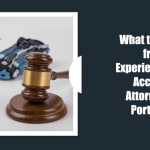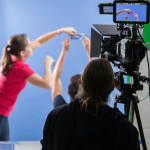Experiencing an MVA (motor vehicle accident) can be life-altering, especially when it results in limb paralysis. This condition often necessitates specialized care to aid recovery and improve quality of life. Motor vehicle accident physiotherapy Edmonton plays a crucial role in this journey, offering tailored treatments designed to regain movement, strength, and independence. MVA physiotherapy understands the challenges faced by individuals with limb paralysis post-accident.
What is Limb Paralysis?
Limb paralysis refers to the loss of motor function in one or more limbs, typically stemming from injury or trauma to the spinal cord, brain, or peripheral nerves. This condition profoundly impacts daily life, hindering mobility, independence, and overall quality of life.
Activities such as walking, dressing, or even basic self-care become challenging or impossible without assistance. Beyond physical limitations, limb paralysis can lead to emotional and psychological strain, affecting relationships and mental well-being.
Effective rehabilitation, including motor vehicle accident physiotherapy in Edmonton, plays a vast role in helping individuals manage symptoms and adapt to new ways of living.
How Physiotherapy Helps Overcome Limb Paralysis After Car Accidents?
Assessment:
Physiotherapists assess the extent of paralysis, nerve damage, and associated injuries to develop a personalized treatment plan.
- Neurological Assessment: Specialized neurological tests, including assessments of muscle tone, coordination, and response to stimuli, aid in determining the extent and nature of nerve involvement.
- Electromyography (EMG): EMG measures electrical activity within muscles, helping to assess nerve function and identify areas of nerve damage or dysfunction.
Early Intervention:
Starting car accident physiotherapy as soon as possible helps prevent muscle atrophy and promotes nerve regeneration. In MVA (Motor Vehicle Accident) physiotherapy, manual therapy techniques and modalities play a huge role in overcoming limb paralysis and promoting recovery. Here are some commonly used approaches:
Manual Therapy Techniques:
Joint Mobilization and Manipulation:
- Joint Mobilization: Using graded oscillatory movements or sustained stretches to improve joint mobility, reduce pain, and restore normal joint mechanics.
- Joint Manipulation: High-velocity, low-amplitude thrusts to joints to restore joint mobility and alleviate pain, typically performed within patient tolerance and safety limits.
Neurodynamic Techniques:
- Nerve Gliding: Gentle movements to mobilize nerves, reduce tension, and improve nerve function in cases where nerve involvement contributes to limb paralysis.
Trigger Point Therapy:
- Trigger Point Release: Applying pressure to specific tender points (trigger points) within muscles to alleviate pain, improve muscle function, and restore normal muscle tone.
Manual Stretching:
- Manual Stretch Techniques: Gentle, controlled stretching of muscles and soft tissues to improve flexibility, reduce muscle stiffness, and prevent contractures (permanent shortening of muscles).
Modalities:
Electrotherapy:
- Transcutaneous Electrical Nerve Stimulation (TENS): Applying low-level electrical impulses via electrodes placed on the skin to reduce pain perception and promote circulation.
- Electrical Stimulation: Utilizing electrical currents to stimulate muscles (e.g., for muscle re-education) or nerves (e.g., for pain relief and nerve function improvement).
Ultrasound Therapy:
- Therapeutic Ultrasound: Using high-frequency sound waves to generate heat within tissues, promoting tissue healing, reducing muscle spasms, and enhancing circulation.
Mechanical Traction:
- Spinal Traction: Using mechanical devices to apply gentle traction to the spine, relieving pressure on spinal discs and nerve roots and improving nerve function.
Active Rehabilitation:
This phase focuses on active exercises to improve strength, coordination, and mobility. Techniques like electrical stimulation and specialized equipment (e.g., parallel bars, treadmills) may be used.
Functional Electrical Stimulation (FES):
- Muscle Activation: Using electrical impulses to stimulate paralyzed muscles, promoting muscle contractions and improving muscle strength and function.
Strength Training:
- Resistance Exercises: Using resistance bands, weights, or body weights to strengthen muscles in the affected limb, improving muscle tone, power, and endurance.
Task-Specific Training:
Physiotherapists guide patients through tasks relevant to daily life or specific activities, promoting functional independence.
- Functional Activities: Practicing activities relevant to daily life or specific goals, such as walking, climbing stairs, or using utensils, to improve functional independence.
- Constraint-Induced Movement Therapy (CIMT): Restricting the use of the unaffected limb to encourage intensive use and improvement of the affected limb.
Adaptive Strategies:
Assistive devices (e.g., braces, walkers) and adaptive techniques (e.g., modified movements) are introduced to support mobility and independence.
Modified Movements:
- Compensatory Strategies: Adjusting movement patterns or body mechanics to accommodate muscle weakness or paralysis, improving efficiency and reducing strain. For example, someone with muscle weakness in their legs might learn to use a wider base of support when standing to enhance stability.
- Task Modification: Simplifying or breaking down tasks into manageable steps to promote successful completion despite physical limitations. For instance, someone with limited mobility might break down the task of dressing into smaller steps, such as sitting while putting on socks or using a reach to grab clothing items.
Orthoses (Braces and Splints):
- Ankle-Foot Orthoses (AFOs): These are used to support and stabilize the ankle and foot, improve gait, and prevent foot drop.
- Knee Orthoses: Provides stability and support to the knee joint, assisting with walking and weight-bearing activities.
- Upper Extremity Orthoses: Supports the wrist, elbow, or shoulder joints to enhance arm function and stability.
Psychosocial Support:
Addressing the emotional and psychological impact of paralysis through counselling and support groups enhances overall rehabilitation.
- Cognitive Behavioral Therapy (CBT): Utilizing CBT techniques to help individuals manage negative thoughts, emotions, and behaviours related to their injury and disability.
- Mindfulness Practices: Teaching mindfulness meditation and relaxation techniques to aid individuals in managing stress, anxiety, and emotional distress related to their injury.
Optimizing Independence:
Motor Vehicle Accident physiotherapy in Edmonton helps individuals recover from limb paralysis after car accidents. It is multifaceted and addresses both the physical and psychosocial aspects of rehabilitation.
Through comprehensive assessment techniques, active rehabilitation exercises, adaptive strategies, and psychosocial support, physiotherapists strive to optimize functional outcomes and enhance quality of life. By integrating personalized treatment plans that include early intervention, task-specific training, and supportive care, In Step Physical Therapy in Edmonton empowers patients to regain independence, improve mobility, and overcome challenges associated with limb paralysis.
Continual monitoring of progress and adjustment of interventions ensure a holistic approach to rehabilitation, fostering resilience and promoting successful recovery for individuals on their journey toward restored health and well-being.
Lynn Martelli is an editor at Readability. She received her MFA in Creative Writing from Antioch University and has worked as an editor for over 10 years. Lynn has edited a wide variety of books, including fiction, non-fiction, memoirs, and more. In her free time, Lynn enjoys reading, writing, and spending time with her family and friends.















